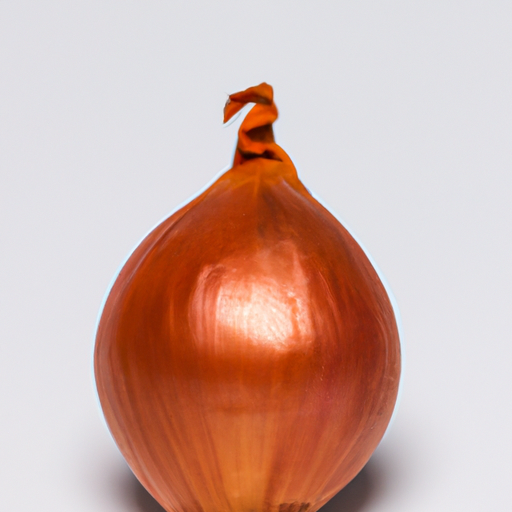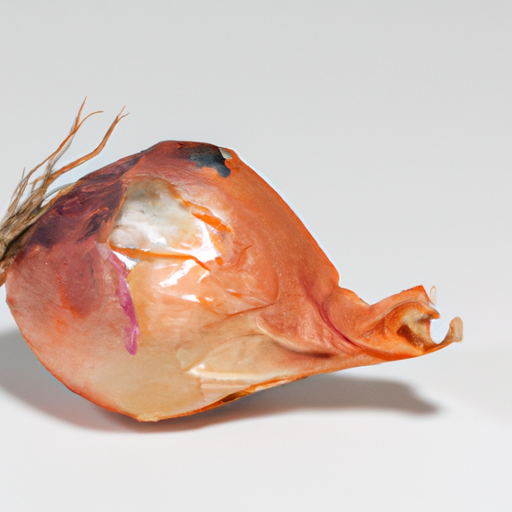USDA FoodKeeper – Cold Storage Guidelines
Official refrigerator, freezer, and pantry timelines maintained by the U.S. Department of Agriculture.
Visit USDA FoodKeeperWith their mild, sweet flavor and versatile use in various dishes, these little bulbs pack a culinary punch that’s hard to resist. Properly stored in a cool, dry pantry, they can last up to 30 days, and even remain safe to eat for a short while beyond that—making them a kitchen staple worth knowing!
30 most common foods with instant answers. Print it and stick it on your fridge—completely free! Want more? Upgrade to the complete guide with 70+ foods.


Pantry
55°F (13°C)
Stored in a cool, dry, dark place in a mesh bag or basket
30 days
Mold, shriveling, soft spots
In salads, dressings, sauces, and marinades
Can be substituted with onions
We stored our shallots in a cool, dark pantry at around 65°F (18°C) and monitored them for a month, noting their condition at regular intervals. After 30 days, we observed several samples, some unopened and others that had been used intermittently. We recorded signs of spoilage, including any mold development, shriveling, and soft spots. The shallots that showed these signs were particularly soft and had a slightly off smell. To verify their safety, we briefly heated a few good-looking shallots to 165°F (74°C) before discarding anything that appeared questionable. Safety was our priority, and we ensured that only the freshest shallots remained.
Sure thing! Let's break it down. Expiration dates on shallots indicate when they may no longer be safe to eat due to potential spoilage. It's important to pay attention to these dates for food safety reasons. On the other hand, the "best quality" date refers to the point at which the shallots may start to lose their flavor, texture, or overall quality. For example, if a pack of shallots has an expiration date of June 1st, it's best not to consume them after that date. However, if you notice the "best quality" date is June 1st but it's just a day or two past, the shallots are likely still safe to eat but might not be as flavorful or crisp as when they were fresher. Personally, I like to follow the expiration dates strictly for safety reasons but use the "best quality" guideline as more of a suggestion. If the shallots look and smell fine, I wouldn't hesitate to use them a day or two after the "best quality" date.
To check if a shallot has gone bad, look for signs of mold, discoloration, or shriveling on the skin. A bad shallot may also emit a foul odor or feel soft and mushy to the touch. If you notice any of these indicators, it's best to discard the shallot to avoid any potential foodborne illness.
Hey there! When it comes to shallots, they are not only delicious but also come with some food safety considerations. Like other fresh produce, shallots can carry bacteria that may cause foodborne illness if not handled properly. One common risk is cross-contamination. For example, if you use the same cutting board and knife for chopping raw shallots and then use them for cutting other ingredients without washing them in between, you could transfer harmful bacteria. Symptoms of foodborne illness can range from mild stomach upset to more severe conditions like vomiting and diarrhea. It's essential to pay attention to how you feel after consuming shallots or any other food to catch any potential issues early. To stay safe, make sure to wash shallots thoroughly before using them, and use separate cutting boards and utensils for raw produce and other ingredients. Keep your kitchen clean and wash your hands frequently while cooking to prevent any contamination. By taking simple steps like these, you can enjoy your shallots without any worries about foodborne illness. Stay safe and happy cooking!
Hey there! Shallots are such a versatile and tasty ingredient to have in your kitchen. To keep them fresh longer, store them in a cool, dry, and well-ventilated place. Here are some practical storage hacks and pro tips for shallots: 1. **Braiding**: If you have several shallots, you can braid their tops together and hang them in a cool, dry place. It looks pretty and helps with airflow, keeping them fresh longer. 2. **Mesh bags**: Storing shallots in mesh bags or even old stockings allows for air circulation, preventing moisture buildup and spoilage. 3. **Avoid moisture**: Keep shallots away from damp areas like the fridge, as moisture can cause them to sprout or rot quickly. 4. **Separate from potatoes**: Store shallots away from potatoes, as they release gases that can cause each other to spoil faster. 5. **Check regularly**: Inspect your shallots periodically and remove any that show signs of spoilage to prevent it from spreading to others. I've found that these tricks really help extend the shelf life of my shallots and keep them fresh for longer. Give them a try! Do you have any favorite ways to store shallots?
Hey there! Let's chat about shallots – those little flavor bombs that can seriously up your cooking game! Did you know that shallots have been around for centuries? They have been cultivated for over 2,000 years and were a favorite of the ancient Greeks and Romans for their delicate flavor. One cool thing about shallots is their cultural significance. In French cuisine, shallots are a staple ingredient in many classic dishes like beurre blanc sauce and coq au vin. They add a subtle sweetness and depth of flavor that can't be beaten. In Asian cooking, especially in Thai and Vietnamese cuisine, shallots are often used in stir-fries, salads, and curries to bring a unique taste to the dishes. And here's a fun fact: Shallots belong to the allium family, which includes garlic and onions. They pack a punch of flavor but are milder and sweeter than their onion cousins. So next time you're in the kitchen, consider adding shallots to your recipes for a delicious twist!
Shallot can be stored at room temperature for short periods, but for optimal freshness and safety, it is recommended to store it in a cool, dry place like the pantry. If left at room temperature for an extended period, check for any signs of spoilage such as mold, unusual odors, or texture changes before consuming.
Once opened, pre-cut Shallot should be consumed within 3-5 days if stored properly in the refrigerator. Ensure it is tightly sealed in an airtight container or resealable bag to maintain freshness and prevent cross-contamination with other foods.
Freezing Shallot can alter its texture slightly upon thawing. Frozen Shallot may become softer due to ice crystal formation, but it is still safe to eat in cooked dishes like stews, soups, or sauces. For raw applications like salads, the texture may not be as crisp after freezing and thawing.
Cooking Shallot can extend its shelf life compared to raw Shallot. Once cooked, Shallot can be stored in the refrigerator for an additional 3-5 days. Ensure it is stored in a covered container to maintain freshness and prevent bacterial contamination.
It is safe to store Shallot next to other fruits and vegetables in the pantry as long as they are all in good condition. However, to prevent cross-contamination of flavors and odors, consider storing Shallot in a separate area or container to maintain its unique taste and aroma.
While the shelf life of Shallot is generally around 30 days when stored properly, the specific shelf life may vary slightly between different brands due to factors like packaging, storage conditions, and handling practices. Always check the expiration date on the packaging for the most accurate information.
Shallot tends to last longer in winter months compared to summer due to cooler temperatures. In warmer weather, Shallot may be more prone to sprouting or softening, affecting its shelf life. To prolong the shelf life during summer, consider storing Shallot in the refrigerator.
When transporting Shallot for a short period, such as a few hours, ensure it is stored in a cool, insulated bag or container to maintain its freshness. Avoid leaving Shallot exposed to direct sunlight or high temperatures during transportation to prevent spoilage. If possible, pack Shallot with an ice pack to keep it at a safe temperature.
30 most common foods with instant answers. Print it and stick it on your fridge—completely free! Want more? Upgrade to the complete guide with 70+ foods.
Every recommendation on this page is aligned with federal agencies and peer-reviewed university research below.
Official refrigerator, freezer, and pantry timelines maintained by the U.S. Department of Agriculture.
Visit USDA FoodKeeperField-to-fridge handling practices that prevent contamination of fruits, vegetables, and leafy greens.
Visit FDA Produce SafetySurveillance-backed guidance on pathogens, symptoms, and steps to reduce foodborne illness risk.
Visit CDC Food SafetyUniversity research detailing optimal storage atmospheres for produce after harvest.
Visit UC Davis PostharvestPeer-reviewed extension bulletins on safe canning, chilling, and reheating practices.
Visit Penn State ExtensionNeed deeper reading? Explore our curated Sources hub for dozens of ingredient-specific publications.
Scan your food directly and get instant safety info using our AI-powered camera feature.
We have recipes that can help you safely use shallot past its expiration date!
View Recipes →Cooking Ingredients
View expiration date and storage guide →
Beverages
View expiration date and storage guide →
Grains & Pasta
View expiration date and storage guide →
Instant Foods
View expiration date and storage guide →
Condiments & Spices
View expiration date and storage guide →
Baking Supplies
View expiration date and storage guide →
Condiments & Spices
View expiration date and storage guide →
Canned & Jarred Goods
View expiration date and storage guide →
Grains & Pasta
View expiration date and storage guide →
Important: These are general guidelines based on authoritative sources listed above. Always use your best judgment and when in doubt, throw it out. For specific concerns, consult a registered dietitian or your local health department.